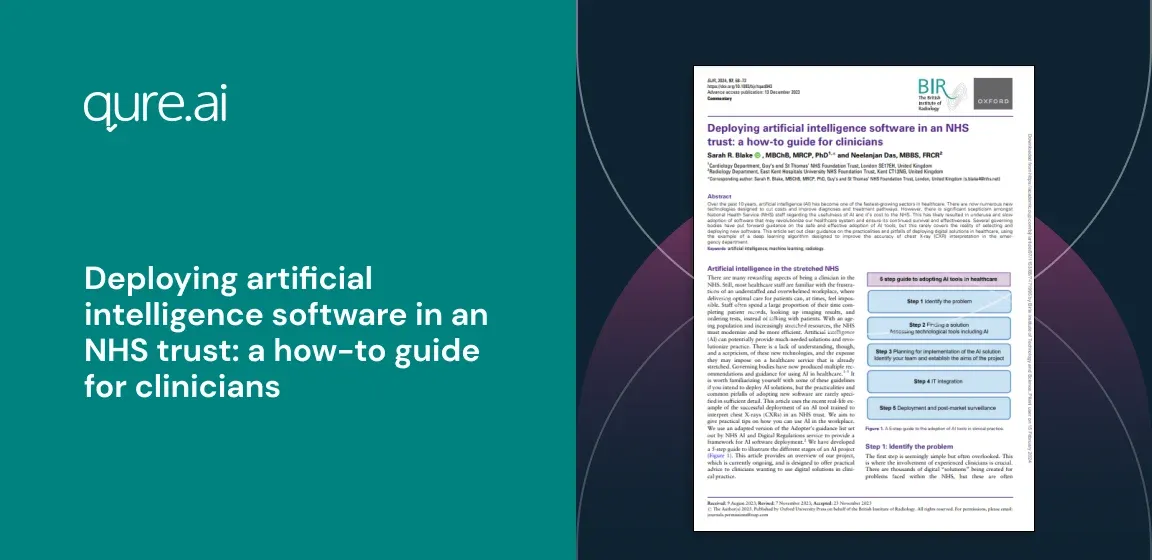Abstract

Back
Over the past 10 years, artificial intelligence (AI) has become one of the fastest-growing sectors in healthcare. There are now numerous new technologies designed to cut costs and improve diagnoses and treatment pathways. However, there is significant scepticism amongst National Health Service (NHS) staff regarding the usefulness of AI and it’s cost to the NHS. This has likely resulted in the underuse and slow adoption of software that may revolutionize our healthcare system and ensure its continued survival and effectiveness. Several governing bodies have put forward guidance on the safe and effective adoption of AI tools, but this rarely covers the reality of selecting and deploying new software. This article set out clear guidance on the practicalities and pitfalls of deploying digital solutions in healthcare, using the example of a deep learning algorithm designed to improve the accuracy of chest X-ray (CXR) interpretation in the emergency department.
Artificial intelligence in the stretched NHS
There are many rewarding aspects of being a clinician in the NHS. Still, most healthcare staff are familiar with the frustrations of an understaffed and overwhelmed workplace, where delivering optimal care for patients can, at times, feel impossible. Staff often spend a large proportion of their time completing patient records, looking up imaging results, and ordering tests, instead of talking with patients. With an ageing population and increasingly stretched resources, the NHS must modernize and be more efficient. Artificial intelligence (AI) can potentially provide much-needed solutions and revolutionize practice. There is a lack of understanding, though, and a scepticism, of these new technologies, and the expense they may impose on a healthcare service that is already stretched. Governing bodies have now produced multiple recommendations and guidance for using AI in healthcare. It is worth familiarizing yourself with some of these guidelines if you intend to deploy AI solutions, but the practicalities and common pitfalls of adopting new software are rarely specified in sufficient detail. This article uses the recent real-life example of the successful deployment of an AI tool trained to interpret chest X-rays (CXRs) in an NHS trust. We aim to give practical tips on how you can use AI in the workplace. We use an adapted version of the Adopter’s guidance list set out by NHS AI and Digital Regulations service to provide a framework for AI software deployment. We have developed a 5-step guide to illustrate the different stages of an AI project (Fig 1). This article provides an overview of our project, which is currently ongoing, and is designed to offer practical advice to clinicians wanting to use digital solutions in clinical practice.
A 5-step guide to the adoption of AI tools in clinical practice.